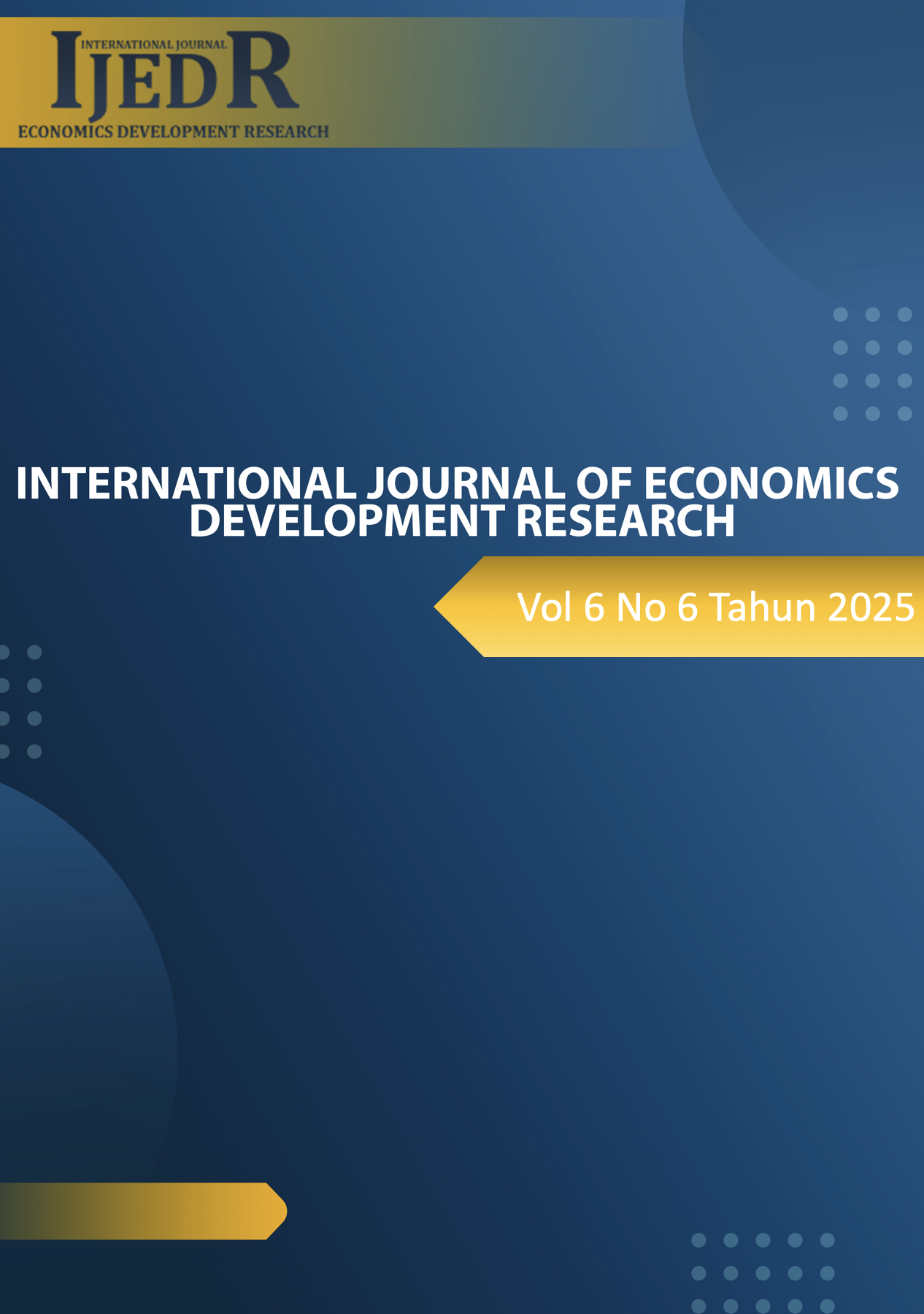Linking Self-Efficacy to Employee Performance: Evidence from BPJS Employment Denpasar with Job Satisfaction as a Mediator
DOI:
https://doi.org/10.37385/ijedr.v6i6.8521Keywords:
Employee Performance, Intervening Variable, Job Satisfaction, Self-EfficacyAbstract
This study aims to examine the influence of self-efficacy on employee performance, with job satisfaction as an intervening variable, within the organizational setting of BPJS Ketenagakerjaan Denpasar. A quantitative approach was employed using Partial Least Squares Structural Equation Modeling (PLS-SEM) to test the relationships among variables in the proposed theoretical framework. The findings reveal that self-efficacy significantly affects both job satisfaction and employee performance, directly and indirectly, through the mediating role of job satisfaction. These results underscore that self-efficacy not only enhances performance directly but also activates a psychological mechanism of job satisfaction that facilitates productive employee behavior. Within the bureaucratic context, this study contributes both conceptually and practically to human resource development strategies. Recommendations are offered to policymakers to implement efficacy-based training, internal recognition systems, and supportive leadership to foster an empowering and sustainable work environment.
References
Büyükbe?e, T., Dikba?, T., Çavu?, Ö., & Asiltürk, A. (2023). Herzberg's Two Factor Theory And Its Impact On Job Satisfaction: A Research on Bank Employees During the Covid 19 Period. KMU Journal of Social and Economic Research, 25(45), 998–1013.
Chitiris, I. (2022). Analyzing Determinants of Job Satisfaction Based on Two Factor Theory. Sustainability, 14(19), 12557.
Ghazzawi, I. (2021). Job satisfaction among information technology professionals in the US: An empirical study. The Journal of American Academy of Business, Cambridge, 11(1), 78–119.
Habib, S., & rekan-rekan. (2024). A deep learning-based hybrid PLS SEM ANN approach for predicting Journal of International Entrepreneurship & Business (judul italic)
Hynes, J., & Koç, H. (2024). Employee cognitive workaholism and emotional exhaustion in a digital workplace: What is the role of organisations? Humanistic Management Journal, 9, 95–114.
Ichsan, R. N. (2020). Pengaruh sistem informasi manajemen terhadap kinerja pegawai BPJS Ketenagakerjaan Cabang Medan. Jurnal Ilmiah METADATA, 2(2), 128–136.
Michie, S., Atkins, L., & West, R. (Eds.) (2020). Changing Behavior Using Social Cognitive Theory. In The Handbook of Behavior Change.
Minbashian, A., & Rafferty, A. E. (2015). Cognitive beliefs and positive emotions about change: Relationships with employee change readiness and change-supportive behaviors. European Journal of Work and Organizational Psychology, 24(4), 578–595.
Purwanto, A., & Sudargini, Y. (2021). Partial least squares structural equation modeling (PLS-SEM) analysis for social and management research: A literature review. Journal of Industrial Engineering & Management Research, 2(4), 114–123.
Rafferty, A. E., & Minbashian, A. (2019). Cognitive beliefs and positive emotions about change: Relationships with employee change readiness and change-supportive behaviors. Human Relations, 72(10), 1623–1650.
Richter, N. F., Hauff, S., Ringle, C. M., & Gudergan, S. P. (2022). The use of partial least squares structural equation modeling and complementary methods in international management research. Management International Review (judul italic)
Schunk, D. H., & Usher, E. L. (2020). Motivation and social cognitive theory. Annual Review of Psychology.
Wahyuningtyas, R., & Disastra, G. M. (2020). Exploring challenges and solutions in performing employee ecological behaviour for a sustainable workplace. Jurnal Mitra Manajemen, 4(9), 1378–1392.
Zia, U., Zhang, J., & Alam, S. (2024). Role of tacit knowledge management process and innovation capability for stimulating organizational performance: Empirical analysis, PLS-SEM approach. Kybernetes, 53(11), 4976–5000.





